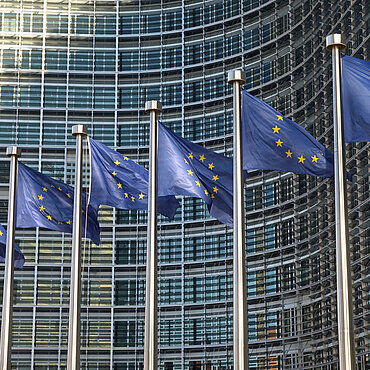Free trade agreement between Japan and the EU takes effect – the largest free trade area in the world is established
The JEFTA, the abbreviation for Japan European Free Trade Agreement, entered into force on 1 February 2019. JEFTA is to date the most important agreement of its kind for the European Union (EU). According to the EU Commission, European exports will grow as a result of JEFTA by up to 24%. Agriculture exports will grow by as much as 180%.
Specific aspects of the JEFTA
Reduction of tariffs
The core aspect of the JEFTA is the reduction of tariffs. Upon complete implementation of the agreement, 99% of the tariffs in mutual commerce in goods will no longer apply. This corresponds to an annual tariff expense for European companies of approximately EUR 1 billion. The remaining 1% involves above all agriculture. However, there is also a partial liberalization in this sector by means of contingents and reductions of tariffs.
It will, however, still take 15 years until the agreement has been completely implemented. During this time, the tariffs will be reduced step-by-step. For example, the Japanese tariffs on certain European beef products of currently 38.5% will decrease over a period of 15 years to 9%, and European tariffs on Japanese motor vehicles of currently 10% will decrease to 0% within 7 years. After all 86% of the Japanese tariff positions, however, were completely liberalized for European exporters when the agreement took effect.
Reduction of non-tariff trade barriers
Furthermore, the JEFTA also reduces other restrictions on free trade. For example, the JEFTA eliminates certain labelling, test and certification obligations. Furthermore, the EU and Japan have agreed to align safety, environmental and quality standards. This is especially of practical importance for industrial goods. Accordingly, products must only be tested once in the EU or in Japan and do not again have to be tested in the destination country. This also applies for sanitary and phytosanitary measures.
Protection of geographic indication and intellectual property
In addition to reducing trade barriers, the economy will also profit from a tightening of the protective standards both as a result of recognition of geographic indications as well as from the uniform protection of intellectual property. Upon the free trade agreement taking effect, Japan will recognize 205 European geographic indications. Hops from Hallertau, Nürnberger Bratwurst and gingerbread, Lübecker Marzipan and similar traditional European products will now have the same protection in Japan as they already have in the EU.
Opening of public procurement
Finally, European companies will have easier access to public contracts as a result of the agreement taking effect. This is above all relevant for the rail transport sector. Previously, this sector in the Japanese economy was hardly accessible for foreign suppliers, and this has changed for European suppliers now that the JEFTA has taken effect.
Protection of investments
Contrary to previous free trade agreements of the EU, the JEFTA was concluded without a chapter on protection of investments. Therefore, the JEFTA did not need approval from the Member States and was able to fully take effect on 1 February 2019.
New developments in the rules for customs preferences
The EU is taking a new approach with the JEFTA involving proof of preference. Formal proof of preference was already waived in the agreement with Canada ("CETA"), and only a declaration of origin from the exporter is recognized as permissible proof of origin. The JEFTA even goes beyond this and, in the alternative, allows the "importer's knowledge" about the origin of the imported products to be sufficient proof. Preferential treatment on imports into the EU is, thus, possible without formal involvement of the exporter in the process. An examination of the authenticity and correctness of proof of origin in the context of cooperation between administrative authorities, such as already takes place for all other proof of origin, is not provided for. The importer in these situations must, of course, provide in practice information which documents the origin of the goods which the importer can only obtain from the exporter. Therefore, this form of proof of origin represents a facilitation especially for those EU companies which are affiliated with exporting companies in Japan. Since the formal proof of origin has been eliminated, aspects involving protection of good faith in the case of incorrect proof no longer play a role, just as is already the case under the CETA.
Exporters in the EU can make declarations of origin on the invoice without any limit on the value when they are registered as "REX". This also applies for issuing replacement declarations of origin. A further easing of the process for importers and exporters involves the possibility of a so-called "long-term declaration of origin" which can extend for a period of 12 months. The relevant implementing regulations for the tax administration with regard to handling origin preferences (Z 42 12, 42 14, 42 15, 42 17) were amended in a timely manner prior to the JEFTA entering into force. A comprehensive information sheet from the General Customs Directorate on the customs preferences can be found here.
Dr Hartmut Henninger and Dr Clemens Keim, Attorneys
Hamburg

Subscribe to our GvW Newsletter here - and we will keep you informed about the latest legal developments!




